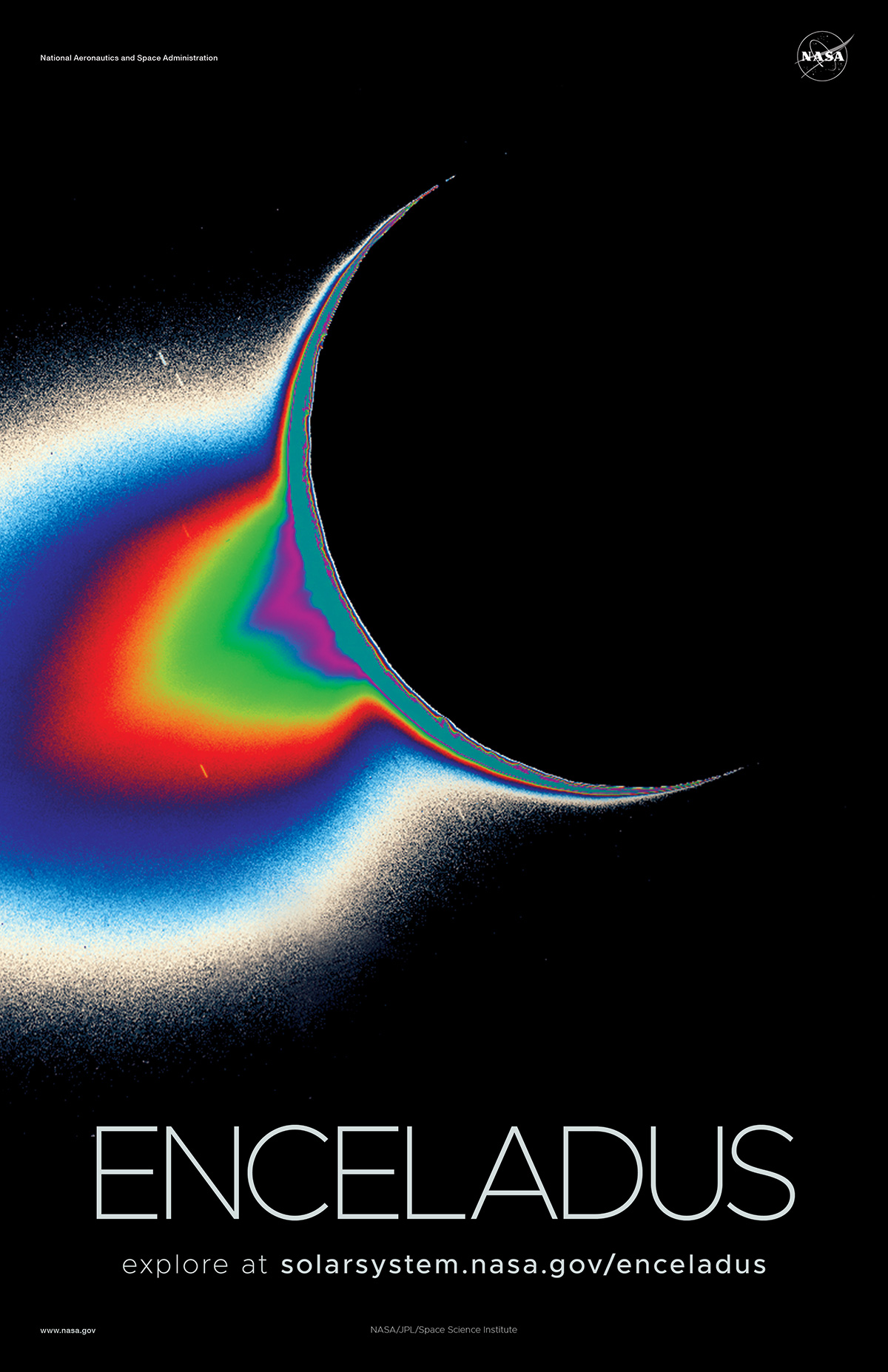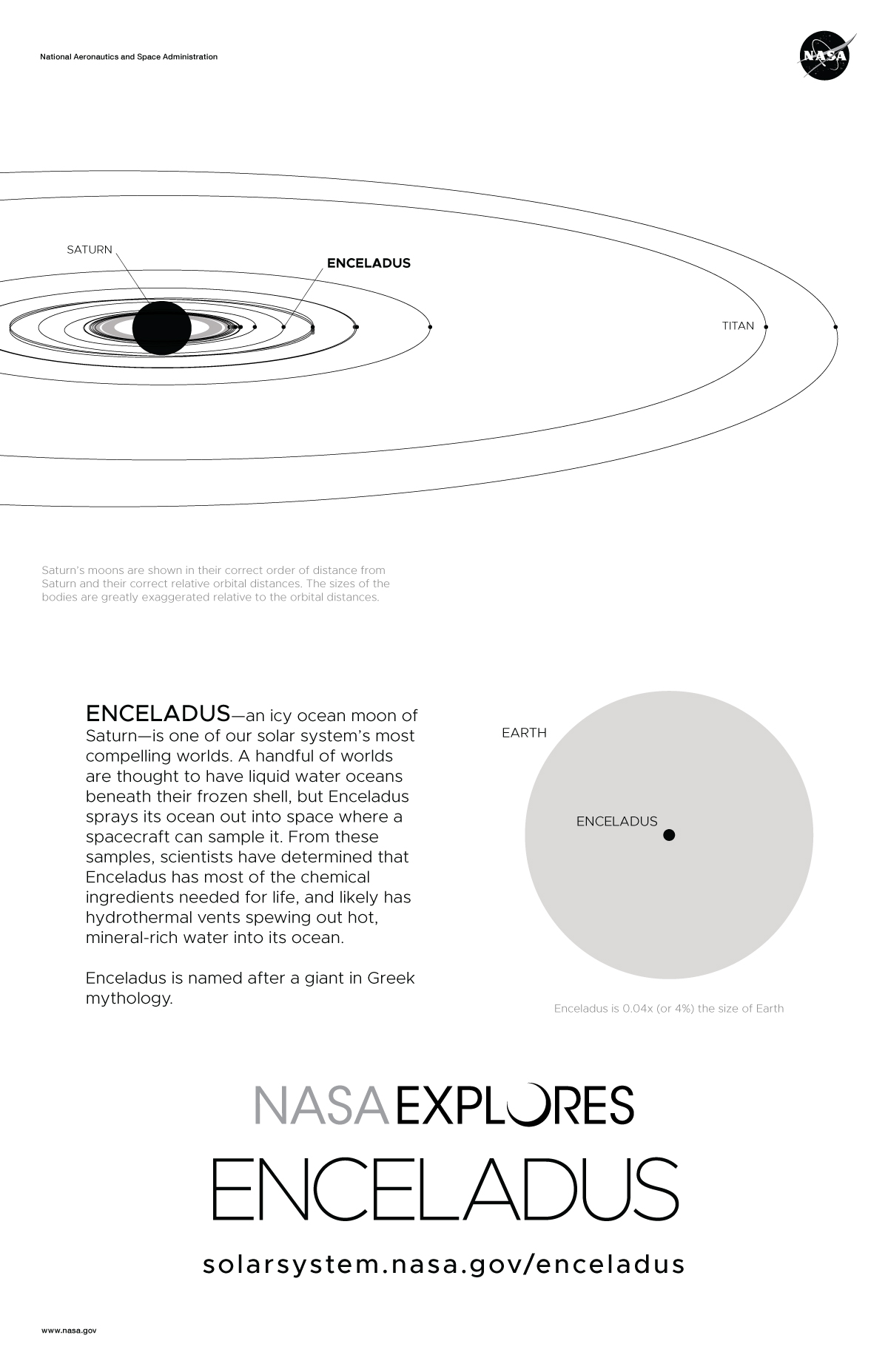Saturn’s Moon Enceladus Poster – Version B

| Credit | NASA |
|---|---|
| Language |
|
Version B of the Enceladus installment of our solar system poster series.
The posters are best printed on 11x17 paper. Several download options are available in the column on the right.
- There are four iterations of this poster: Version A, Version B (this one), Version C and Version D.
- Download full set
About the image: Cassini images of Enceladus backlit by the Sun show the fountain-like sources of the fine spray of material that towers over the south polar region. The greatly enhanced and colorized image shows the enormous extent of the fainter, larger-scale component of the plume. Credit: NASA/JPL-Caltech/Space Science Institute
On the Back

Few worlds in our solar system are as compelling as Saturn’s icy ocean moon Enceladus.
A handful of worlds are thought to have liquid water oceans beneath their frozen shell, but Enceladus sprays its ocean out into space where a spacecraft can sample it.
From these samples, scientists have determined that Enceladus has most of the chemical ingredients needed for life, and likely has hydrothermal vents spewing out hot, mineral-rich water into its ocean.
About as wide as Arizona, Enceladus also has the whitest, most reflective surface in the solar system. The moon creates a ring of its own as it orbits Saturn—its spray of icy particles spreads out into the space around its orbit, circling the planet to form Saturn’s E ring.
Enceladus is named after a giant in Greek mythology.
Explore Enceladus in depth at https://solarsystem.nasa.gov/enceladus
